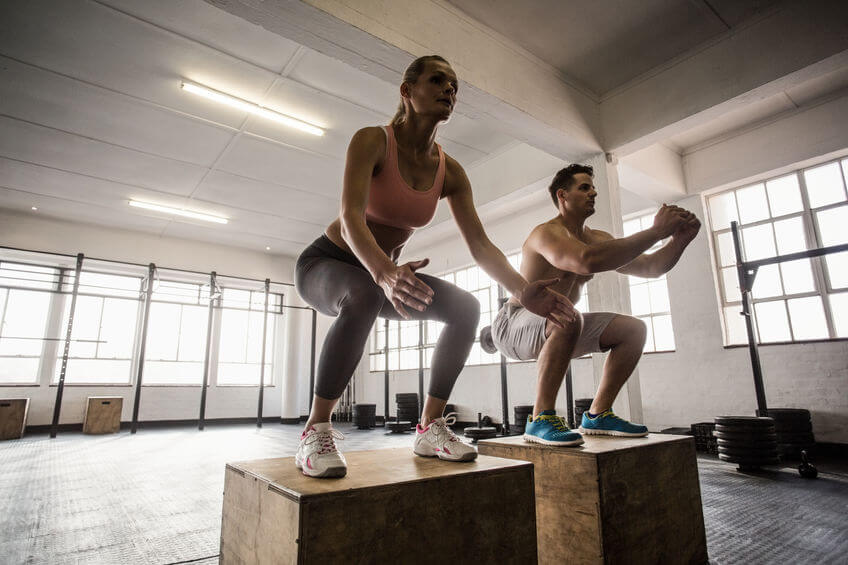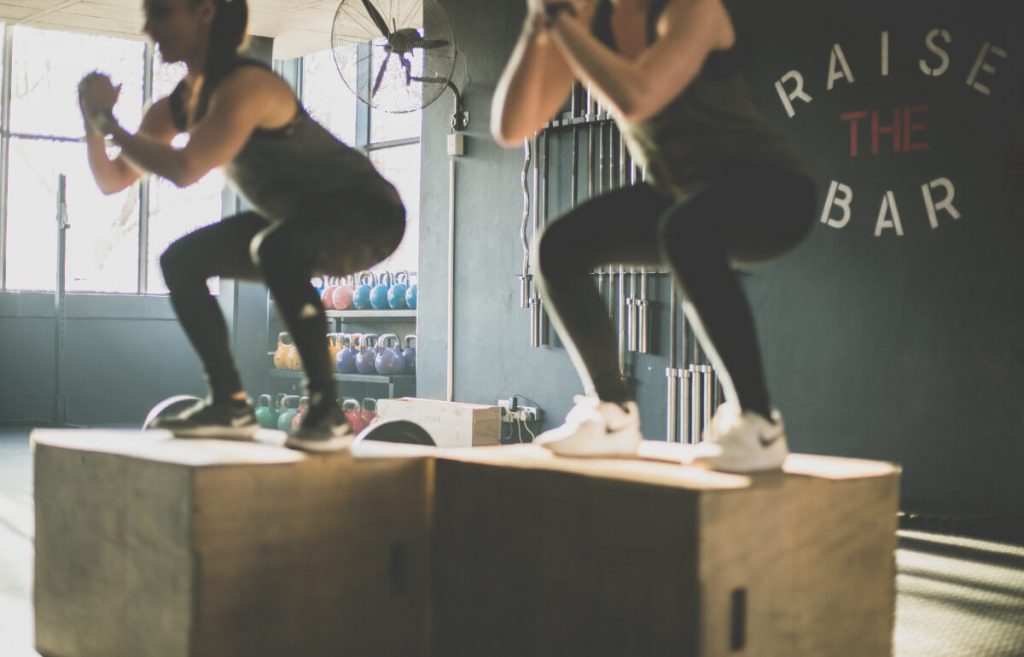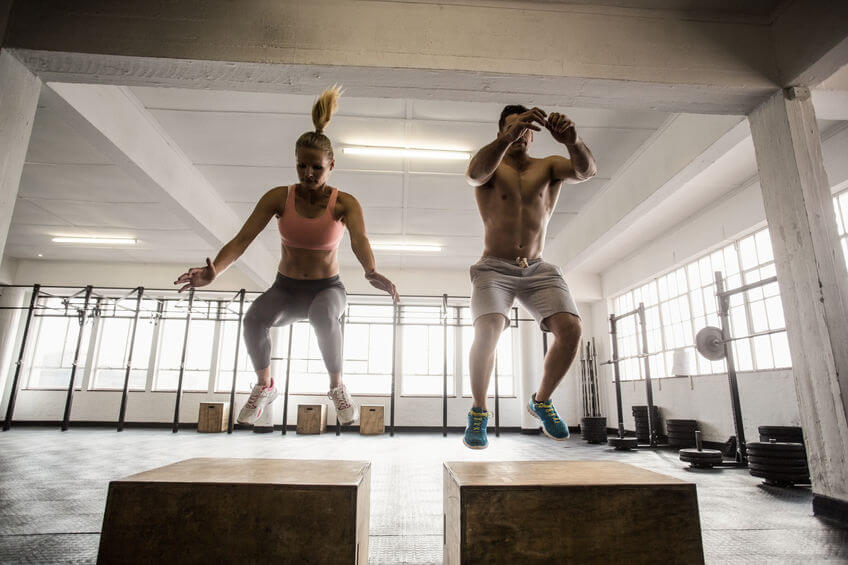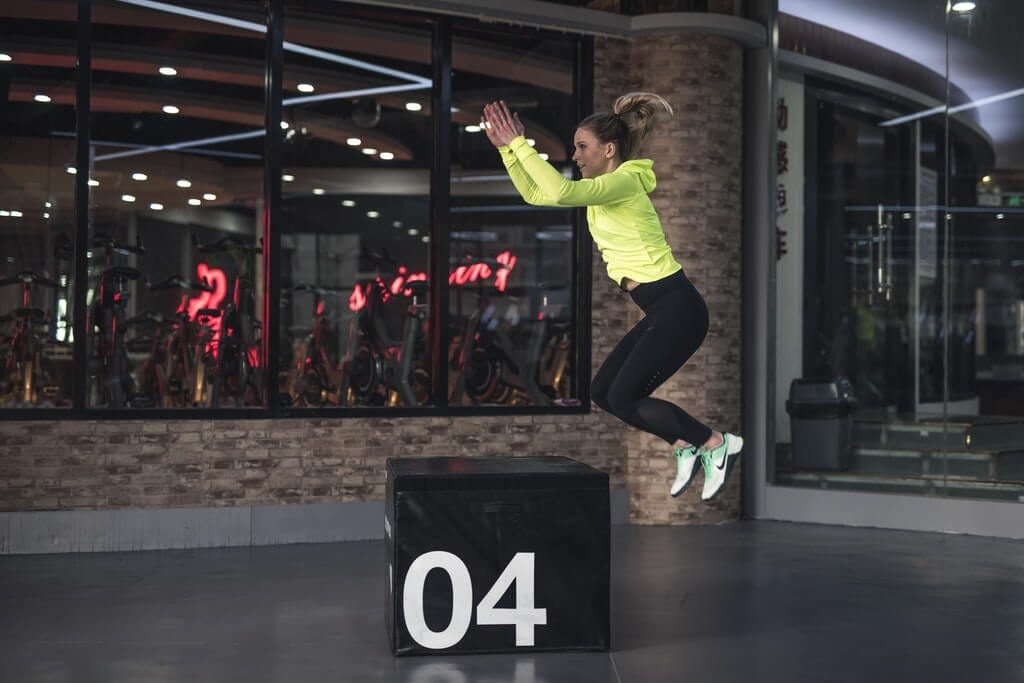6 Proven Benefits of Box Jumps: Why This Exercise Should be a Part of Your Routine
I know what you’re thinking… are there really any benefits of box jumps?
I know because I used to ask myself the same question… How could jumping onto a box repeatedly actually help my athleticism?
Fortunately, I was able to find that there are actually some great benefits.
Instead of looking at box jumps like a fool’s errand, I realized that it was an opportunity to not only help me get stronger and more powerful but also a way to get in great shape and even improve my running ability.
Not to mention… It’s fun!
In this article, I’m going to share with you the various benefits of box jumps and show you how to use them in your own exercise routine to build athleticism and get seriously conditioned.
Contents
Box Jumps are a Method of Plyometric Training
If you’ve ever been involved in athletics, there’s a good chance that you’ve heard of plyometric training.
Plyometrics are exercises that typically mimic the demands of the sport that you’re training for and often include jumping as far or as high as possible with no resistance other than your bodyweight.
For example:
Basketball players often use a form of plyometric exercises known as countermovement jumps, where they squat and use the momentum of swinging their arms to jump as high as possible.
In this example, this type of jump matches what would happen during a rebound attempt.
But plyometric exercises aren’t exclusive for athletes.
Box jumps, for example, are one of the best forms of plyometric training, even if you’re not an athlete.
Why?
Instead of just jumping in the air, box jumps give you a goal height to reach. Typically, this height is a bit more than you would usually jump, which encourages you to work harder.
As a result, you put forth more effort and gain greater benefits in terms of power and force development.
That’s not all, though…
Box jumps are challenging for your cardiovascular system, which means they can help you improve endurance and even help with improving body composition.
Fortunately, there are many benefits of plyometric box jumps that can be useful for anyone, even if you’re not an athlete.
6 Proven Benefits of Box Jumps
1. Box Jumps Help Develop Power
An important benefit of plyometric exercises like box jumps is that they can help you develop more power.
Improved power development means that you’ll be able to activate and contract your muscles faster and with higher force.
But that’s not only beneficial for athletes.
Even if you’re just interested in building more strength and building bigger muscles, having improved power generation means you’ll be able to lift heavier amounts of weight, with higher force.
Lifting heavier weight with higher force will make you stronger and also encourage your muscles to grow to a bigger size.
As a good example, box jumps can help you develop a stronger squat.
Since you’re teaching your legs to contract with high force at a fast rate, this improvement in power generation could translate to when you’re performing a squat, potentially allowing you to lift heavier and progress faster.
2. Box Jumps can Help You Get Conditioned
Since box jumps require most of your body to move in unison, you’re activating a lot of muscle all at once.
This means you’re using a lot of energy, especially if you do multiple reps.
If you decide to use box jumps repeatedly like with many CrossFit workouts, you’ll need a lot of energy to jump high enough, but also to recover between jumps.
This means your cardiovascular system will be working overtime to help you recover, but also perform.
For example:
Imagine attempting to complete 50 box jumps as quickly as possible, such as what’s required in the Filthy Fifty CrossFit workout.
Your cardiovascular system will be working as hard as possible to help you recover and push through the workout.
As a result, you’ll drastically improve your endurance and ability to recover, which can help you train at a higher intensity and benefit more from your workouts in the future.
But that’s not the only benefit…
Since repeated box jumps are so intensive, you’ll also burn through a massive amount of calories, which can make weight loss and improving your body composition a breeze.
3. Box Jumps can Make Your Bones Stronger
Did you know that resistance training makes your bones stronger? Believe it or not, so can box jumps.
Some studies suggest that during resistance training if you use adequately heavy resistance, your bones bend slightly, which initiates a growth response.
In response to your bones being stressed, the body reinforces them, making them stronger.
Now:
Box jumps don’t necessarily load your bones with extra weight. But when you jump off of the box, the force of landing similarly stresses your bones, potentially initiating the same growth response.
For instance, one study testing a plyometric training program, including box jumps, showed an improvement in bone mass as a result of regularly incorporating them into training.
The effects overall, however, were mild, which suggests that if you want to make your bones stronger, you should also use some form of weight-bearing exercise like a barbell squat, along with box jumps.
4. Box Jumps Make Progression Easy
Regardless of your goals for exercise, you must practice the principle of progressive overload.
Exercise provides a way to encourage your body to grow stronger, build muscle, or burn fat. If you’re working harder than your body is accustomed to, this is called overload.
As a result of this overload, your body adapts so that the next time you do the same workout, it’s better prepared. That’s why doing the same workout a second time is usually easier.
However:
For this process to continue, you need to do more and more over time progressively. Otherwise, the body has no reason to improve.
Fortunately, box jumps provide a few routes to practice progressive overload:
- You can progressively increase box height, making your jumps more difficult.
- You can add additional sets of box jumps in a single workout.
- You can do more jump repetitions per set.
- You can try to do more jumps in a certain amount of time.
- You can change how you jump, such as do single-leg jumps.
- You can combine box jump variations to mix things up.
Additionally, you can even combine box jumps with other exercises to make your workout even more difficult.
Such as:
You can add a squat once you safely land on the box or do a burpee after you’ve landed on the ground after the box jump.
Or…
You can get creative and mix in other exercises you enjoy.
Clearly, there are many ways change up your workout using box jumps to ensure that you’re consistently practicing progressive overload.
5. Box Jumps can Make You a Better Runner
Due to their versatility, there are many benefits of box jumps for runners, and if you care about running performance, you should be using this exercise.
First of all, if you perform box jumps repeatedly, you’ll be stressing your cardiovascular system. As a result, your cardiovascular system will adapt to help supply your muscles with nutrients and oxygen.
These adaptations can help you run longer and do so faster.
But, there’s more:
One study showed that even for seasoned endurance runners, using plyometric training for only eight weeks led to a significant improvement of running economy.
This means that plyometric exercises helped these runners use less energy for the same run distance, making them more efficient.
Being more energy efficient translates to being able to run further distances at a faster pace, which is a goal for just about any runner.
6. Box Jumps can be Combined with Resistance Training
Both resistance training and box jumps can lead to explosiveness and strength development, but using them together can truly take you to new heights.
One example is squat and jump combination, often used by athletes, and takes advantage of a principle called post-activation potentiation.
The idea is as follows:
If you complete a squat using resistance, your muscles must be activated enough to overcome that resistance.
As a result, your muscles and nervous system remain primed to be able to overcome that resistance again.
That’s why resistance sets often feel a little bit easier on the second and even third set after starting the workout.
Now:
If you do a box jump immediately after the squat, your muscles will still be primed to overcome the resistance you used during the squat.
Essentially:
Your brain is telling your muscles to contract more explosively than what you need to jump off of the ground.
As a result, you’ll be able to jump higher and more explosively than usual.
Pretty cool, right?
To use this method, you’ll need to find a quality power rack or leg press. Then, find a sturdy box and set it up reasonably close to the rack or press.
After doing a proper warm-up and finding a spotter, work your way up to 70% to 80% of your one-rep maximum on the squat or leg press.
Once you do, complete one set of one to three repetitions, ensuring you don’t go to failure. Then, rest a minute or two until you’re recovered.
After recovery, perform one to three box jumps as explosively as possible.
What you’ll find is:
The box jump not only feels a bit easier, but you’ll probably be able to jump a bit higher.
Now… repeat as desired!
Frequently Asked Questions About Box Jumps
If you’re new to box jumping, there might be a few questions that you need to have answered before you start.
Are Box Jumps Good for Building Muscle?
The answer here really depends on how experienced you are with exercising and how you perform your jumps.
Typically, muscle growth occurs as a result of using more resistance than usual. This means that if you use resistance training often, jumping with just your body weight probably won’t lead to muscle growth.
However:
If you’re able to safely use resistance, such as with a weight vest or a medicine ball, then building muscle with box jumps is a possibility.
Just remember that if you want to improve, you need to practice the concept of progressive overload.
What Muscles do Box Jumps Work?
Fortunately, box jumps are a full-body exercise. If you’re doing them correctly, you’ll be using your arms, core, and all of your lower body.
However…
You should consider box jumps to be a core and leg exercise primarily. These muscle groups will be worked the most and will likely see the most improvement.
Tips for Incorporating Box Jumps into Your Routine
I know you’re excited to start using box jumps, but there are a few guidelines to follow:
Use The Right Box
While you can use stairs or a sturdy bench, using a high-quality plyometric box is the best piece of equipment to use for box jumps.
In addition to reliability, after repeated jumps, you want a box that has a non-slip surface to ensure maximum safety.
Regardless of the platform you choose, make sure the surface you land on won’t move or buckle after landing.
Respect how Fatiguing Box Jumps are
There’s no doubt about it…
Box jumps are challenging, which means they can be very fatiguing.
While it’s okay to get fatigued during a workout, you want to make sure that you’re not too fatigued if you hope to continue working out after box jumps, especially if you plan to use free weights.
Now:
If you do want to combine box jumps with other exercises like free weights, I suggest doing your box jumps after the free weight exercises.
Or:
Don’t get too fatigued if you decide to do box jumps first.
Since free weight exercises can be dangerous, it’s usually best to do those when you’re fresh. Plus, using free weights when you’re not fatigued will make them more beneficial.
Know Your Limits
Even though box jumps are relatively easy to learn, they can be dangerous if you’re overstepping your ability. Instead, start with box heights that you know you can achieve before increasing the height.
You definitely don’t want to miss the box and hit your shins or your face on a corner or edge of the box, especially if it’s made out of wood or steel.
Additionally:
Regardless of your expertise in box jumping, it’s always a good idea to have a spotter for once you land on the box. Losing balance is a definite possibility, and it’s still best to be prepared.
Mix Things Up!
The great thing about box jumps is their versatility. Like I mentioned earlier, you can use box jumps to develop strength and power, or, use them for conditioning.
Don’t get locked into only one type of box jump workout.
Instead:
Try alternating how you use box jumps from one week to the next.
For example, the first week you use them, try being as explosive as possible and take longer rest in between jumps to develop strength.
Then the following week:
Try doing as many repetitions as you can in a minute or two. Afterward, try to improve on that number.
Once you feel comfortable with box jumps, mix things up. The possibilities are endless!
Final Thoughts
There are so many benefits of box jumps that make them deserving of a place in your exercise routine. Even if you’re not an athlete, box jumps can help you become stronger and improve your body composition.
Just remember:
If you want to use box jumps, make sure to use safe practices, and practice progressive overload.
Finally…
Consider subscribing to our newsletter to gain more helpful insight and exercise guidance, straight to your inbox!





